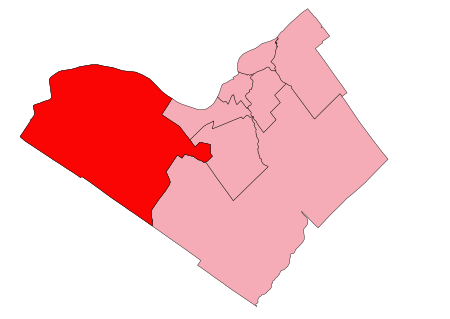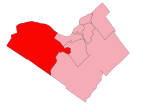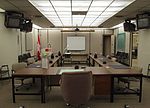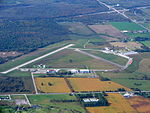Kanata—Carleton (provincial electoral district)
CanElecResTopTest with bare yearOntario provincial electoral districtsProvincial electoral districts of Ottawa

Kanata—Carleton is a provincial electoral district in Ottawa, Ontario which was first contested in the 2018 provincial election. The riding was created federally with the 2012 redistribution process. That same process was announced by the Ontario government, meaning the provincial ridings will follow a similar boundary division for the 2018 provincial election. The new riding contains almost all of the portion of the former Carleton—Mississippi Mills located in Ottawa, except for the portion south of Highway 7/Highway 417 that transferred Carleton. A small fraction came from Nepean—Carleton surrounding the Bridlewood neighbourhood.
Excerpt from the Wikipedia article Kanata—Carleton (provincial electoral district) (License: CC BY-SA 3.0, Authors, Images).Kanata—Carleton (provincial electoral district)
Thomas A. Dolan Parkway, Ottawa West Carleton-March (West Carleton)
Geographical coordinates (GPS) Address Nearby Places Show on map
Geographical coordinates (GPS)
| Latitude | Longitude |
|---|---|
| N 45.371 ° | E -76.097 ° |
Address
Thomas A. Dolan Parkway
Thomas A. Dolan Parkway
Ottawa, West Carleton-March (West Carleton)
Ontario, Canada
Open on Google Maps







